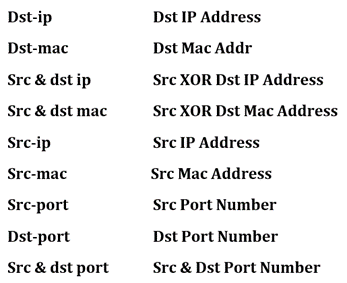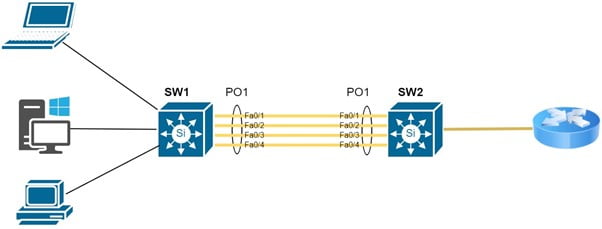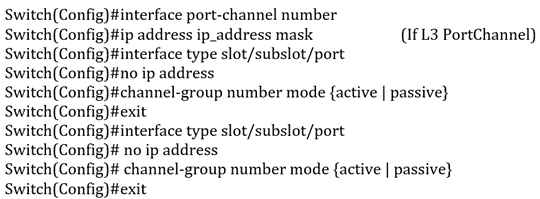Different Types of EtherChannel & Load Balancing Algorithm
EtherChannel (PortChannel) is used to combine the multiple physical links into a single logical link. In this blog, we will cover the following points.
- Why we need EtherChannel
- Terminology of EtherChannel
- Load-Balancing algorithm
- Basic Configuration details
Why Do We Need EtherChannel?
As we all know about the cable capacity, port capacity, and redundancy from the network perspective. If we connect single or multiple links to send or receive the traffic, by default only one link will be active and another link will be in a blocking state due to the Spanning-tree protocol to avoid the loop and we can’t utilize the other link. If we use only single cable connectivity and at the time of failure data will loss. To prevent such kind of event we use EtherChannel, which aggregates multiple links into a single logical link and increase the bandwidth as well as port redundancy.
The Terminology of EtherChannel
Following are the three methods by which we can configure the EtherChannel
LACP (Link Aggregation Control Protocol)
This is an open standard protocol and uses in different vendor devices. In this mode, we can take 16 links to aggregate but 8 links will be active, and the remaining are in standby mode. The modes that are used to configure the LACP are Active and Passive
Note- Active-Active & Active-Passive can support but Passive-Passive does not support.
PAGP (Port Aggregation Protocol)
This is a cisco propriety protocol and can use only in Cisco devices. This is similar to LACP. The modes that are used to configure the LACP are Auto and Desirable.
Note-Auto-Desirable, Desirable-Desirable can support but Auto-Auto does not support it.
Static (Manual)
Statically define the Aggregation the links into single logical link also. This mode bypass the configuration of LACP and PAGP Protocols. It also works on all wanders devices.
Only ON mode can configure as static.
Load-Balancing Algorithm
EtherChannel uses load balance while sending and receiving the traffic on which ports are the parts of the Port Channel. EtherChannel not doing equal load balancing across all links which are part of a port bundle. EtherChannel load balancing on basis of per frame. By default, load-balancing algorithm source MAC address used. We can change it manually and use the following algorithm
Find the following a short summary of distributed load on multiple links of Port-Channel
All models of switches support Src-IP, Dst-IP, Src-MAC, Dst-MAC, Src-Dst MAC & Src-Dst IP. But Src-port, Dst-port, and Src-Dst Port only support the latest devices for example:6500/4500, etc.
Selection of Link
The hash algorithm calculates the binary pattern to choose the link within the Port-Channel bundle.
If two link bundles use the XOR pattern to calculate the Hash algorithm.
If four links bundle use last 2-bits to calculate the Hash algorithm.
If eight links are in a bundle use the last 3-bits to calculate the Hash algorithm.
Basic Configuration details
From the configuration perspective, we need to follow some basic points while configuring the EtherChannel-
- Both side ports Speeds should be the same.
- Both side ports Duplex should be the same.
- Both side port types (Layer 2 or Layer 3) should be the same.
- Both sides configured Native VLAN should be the same.
- Both sides MTU size should be the same.
- Both sides Allowed VLAN should be the same.
Some basic configurations mentioned to how to configure the LACP, PAGP, and Static method-
For LACP-
Similarly, we can configure for PAGP and Static mode also. Only we will use “Auto/Desirable/ON” on the replace of Active/Passive. The Configuration will happen at both switch end.
EtherChannel provides many types of benefits like we can utilize up to eight links while making in a bundle. It provides redundancy and load balancing which are the most necessary parts of any network design. This is just a small part of the offer that Zindagi Technologies gives. We have many more offers and services that can completely transform your business and ease the working of it. We are just a call away at +91 9773973971 and you can also get in touch with us through the mail.
Author
Brijesh Yadav
Network Consultant Engineer
